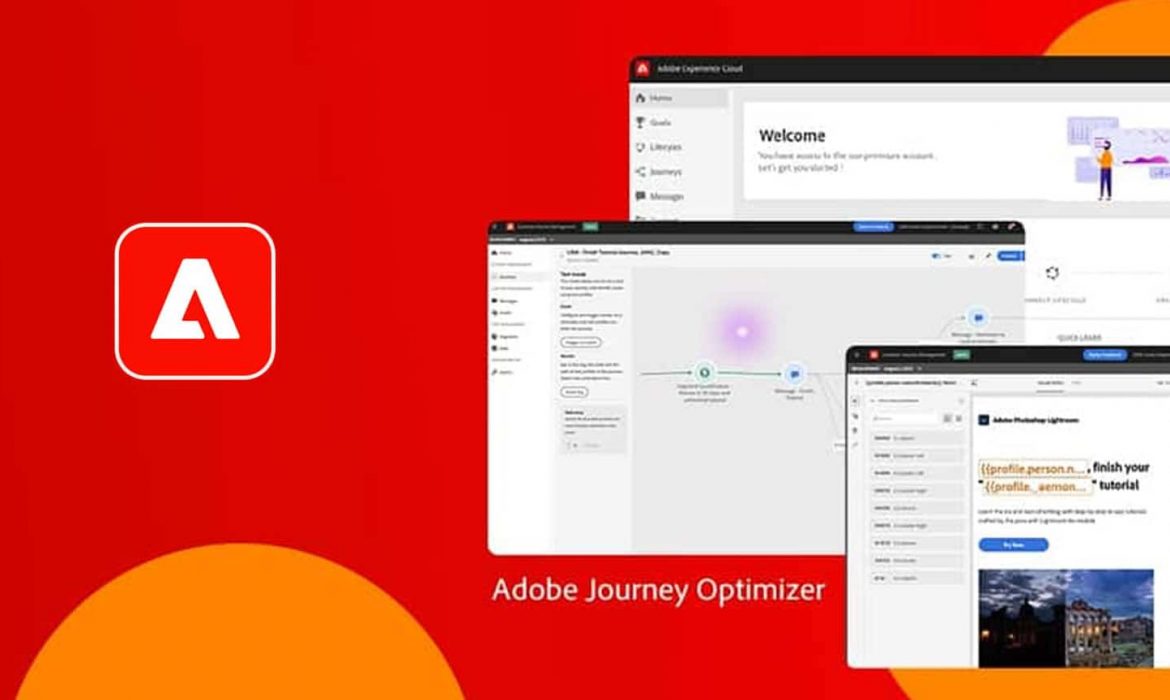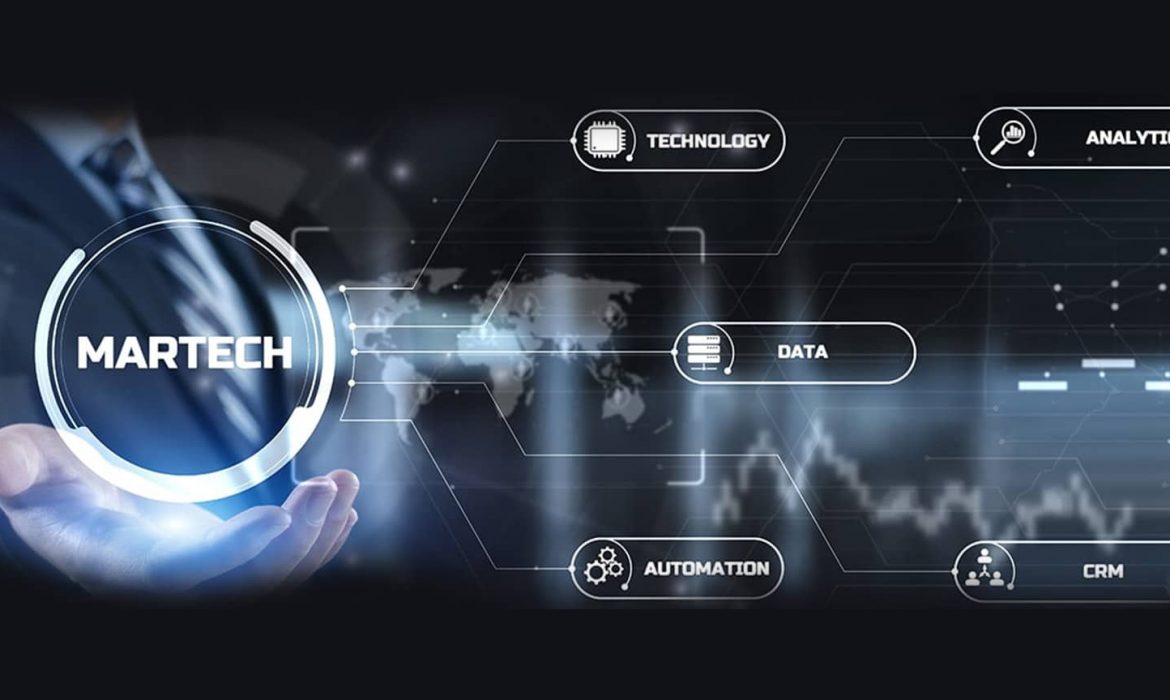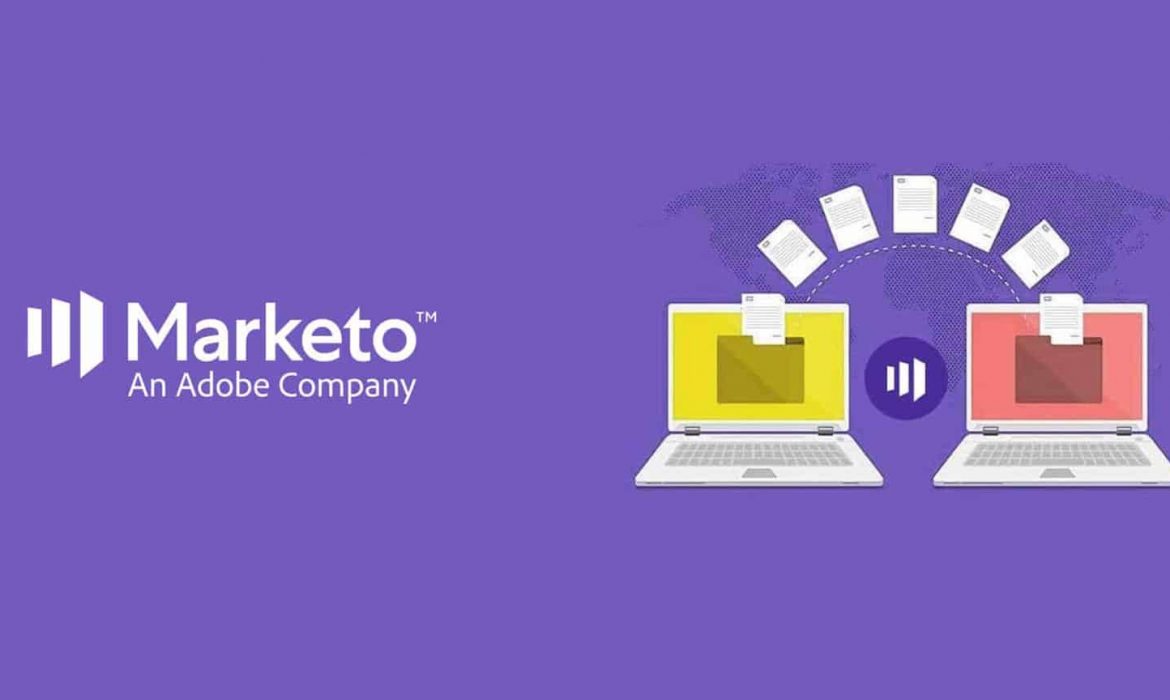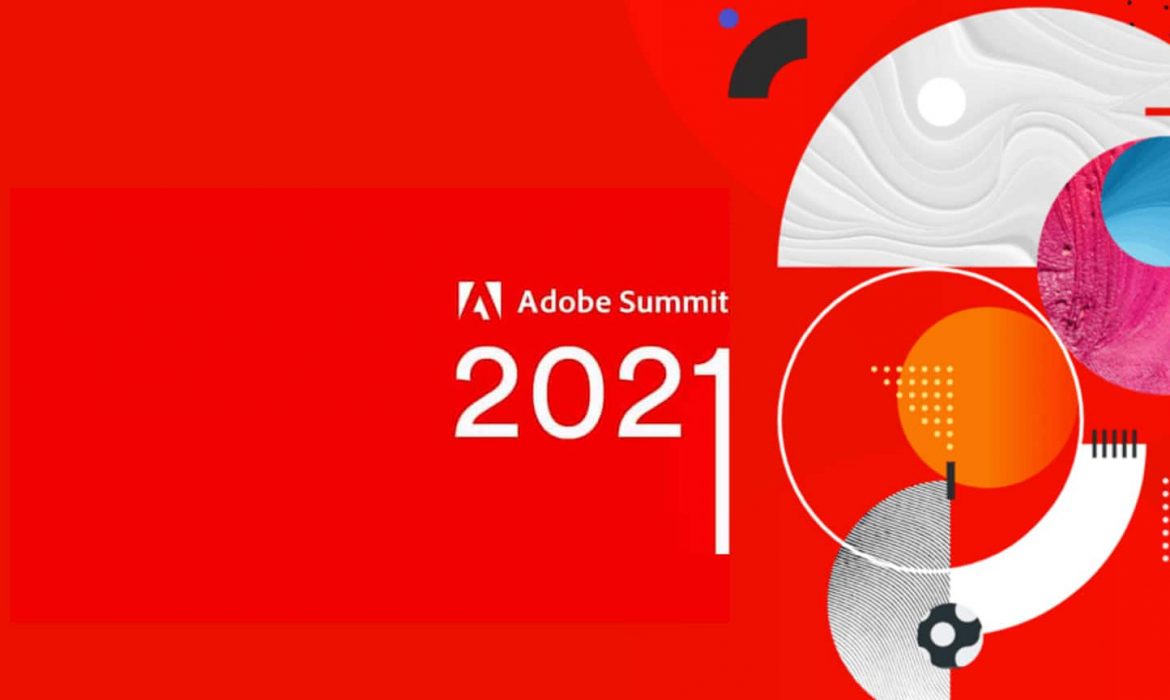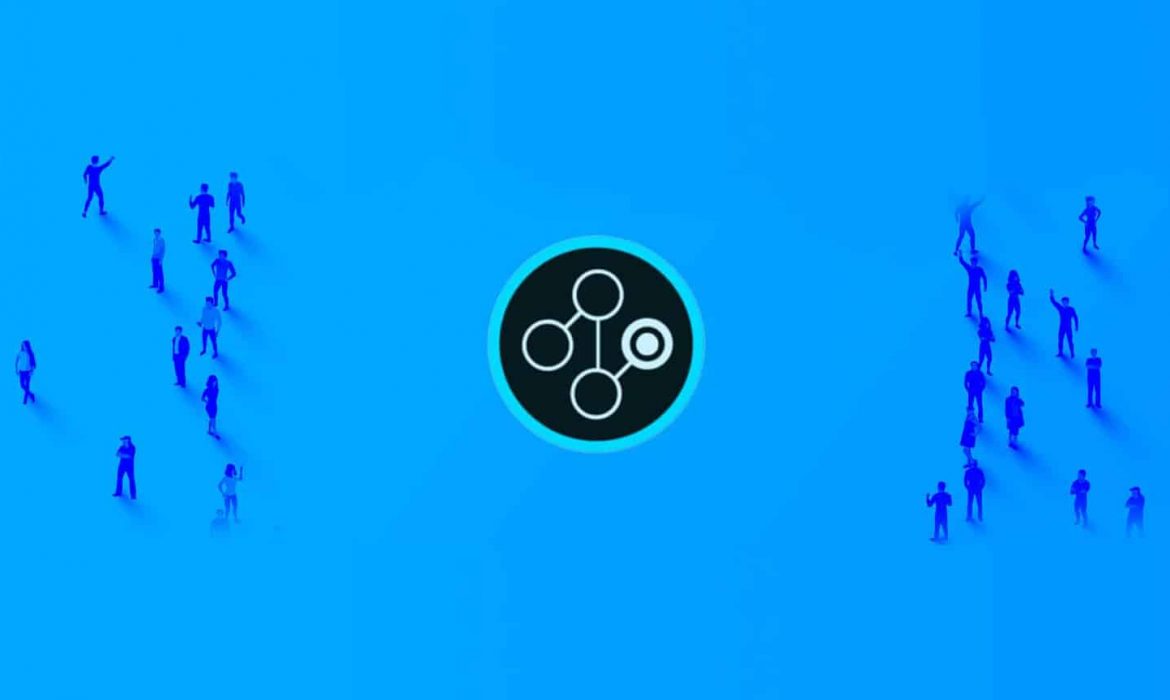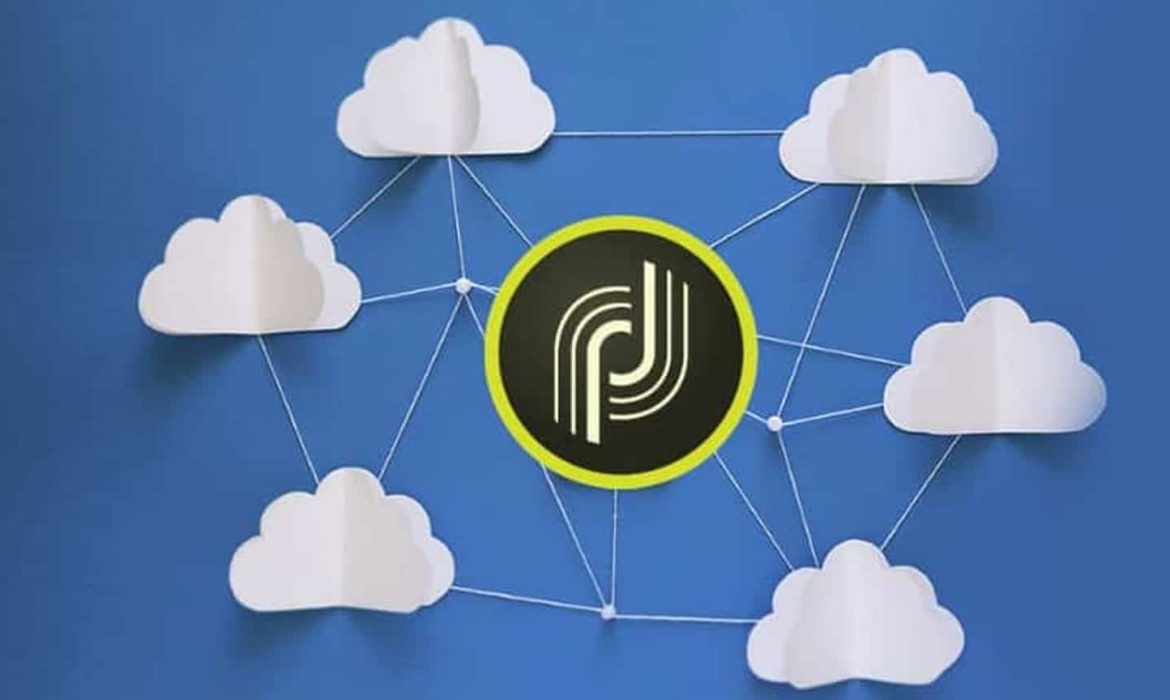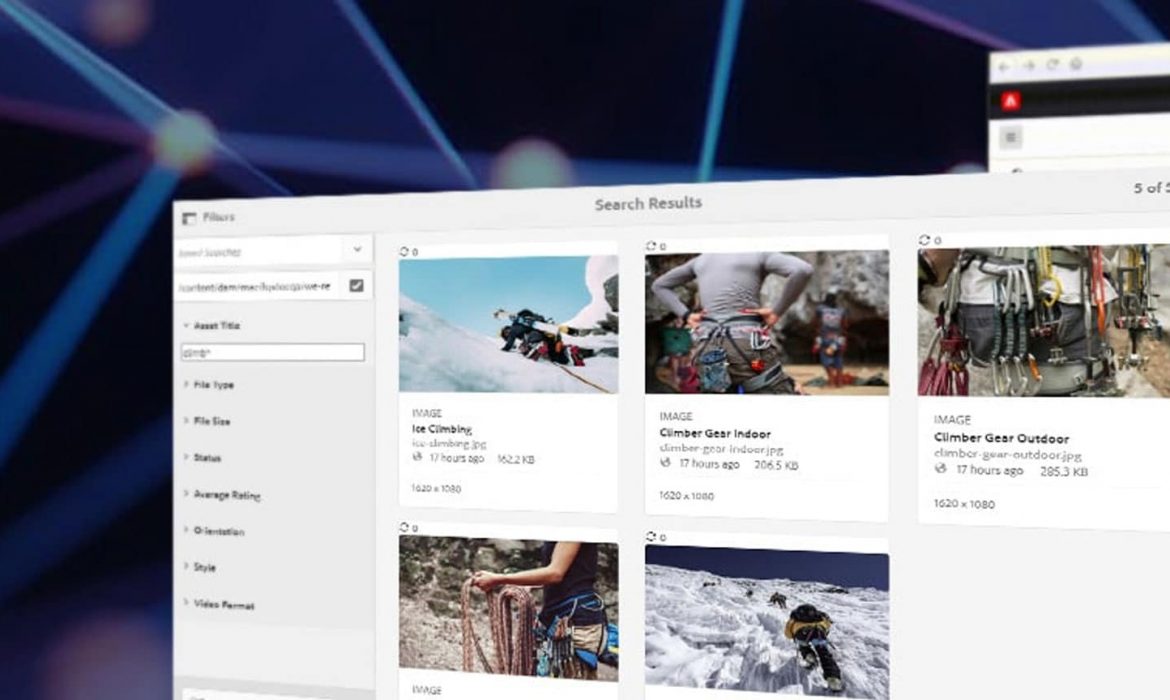Adobe journey optimizer-realtime omnichannel journeys for better customer interaction
Please note that while Adobe Journey Optimizer is expected to be released later in 2021, we have only been given a “roadmap” without any commitment to this specific application or its related features.
Whether you’re still catching up on sessions or watching highlights from Adobe Summit 2021, you’re sure to hear or read about Adobe Journey Optimizer. This Adobe Experience Platform Application will be a centralized app “that helps brands to easily identify, create, and deliver the next best interaction,” according to Anjul Bhambhri, SVP Adobe Experience Cloud.
Bhambhri’s description, in addition to the few related sessions, is enough to excite most anyone in the martech space, but there isn’t a lot of information on AJO available as of now. Based on what we do know, here is a general overview of what we hope to see when the application is released and why this tool is such a huge, necessary step in the right direction for martech.
Taking Direction with Integrated Data
Why is it so special?
- Potential – The proposed use of real-time customer profiles to power 1:1 customer journeys would make it one of the most complete profiling tools around. Plus, if the predictive engagement tool is released later, that would give businesses a measurable way to retain and boost subscriber totals.
- Centralization – Audiences today live in an increasingly decentralized world. This is reflected in their actions and many of the applications we use daily, as people and marketers. Adobe Journey Optimizer, as it was announced, gives organizations a way to harness centralized data from our decentralized world and interactions with less effort since it accomplishes similar tasks from other applications in one space.
- Novelity – Up to this point, there hasn’t been an application that pulls in so much data from so many different sources for you to sift through while creating offers and targeting audiences – all at the same time. We have seen some of the capabilities in other applications, like Adobe Target and Adobe Campaign, but never have we seen so much of the data coming to one place for us to see and use at the same time. This groundbreaking solution could save marketing, sales, and design departments a lot of time while increasing personalization and targeting capabilities.
Since it is the first application of its kind, this opens minds up to a whole new realm of possibilities, for the Adobe Experience Platform Application and others. That leads us to the next section.
Adobe Journey Optimizer Use Cases for Marketers
Based on what we have seen at the Summit, here are the top use cases that marketers can exploit, right off the bat with AJO:
- Omnichannel Orchestration: Pair your real-time profiles from Adobe Experience Platform with powerful workflows to create 1:1 resonating messages.
- Power your personalization with AI: Use out-of-the-box AI-enabled features from Journey.AI to optimize the outcomes of your messages.
- Marketing Automation: Transform your approach to the age-old problem of automating your campaigns or transactional messaging with the power of real-time listening across any channel.
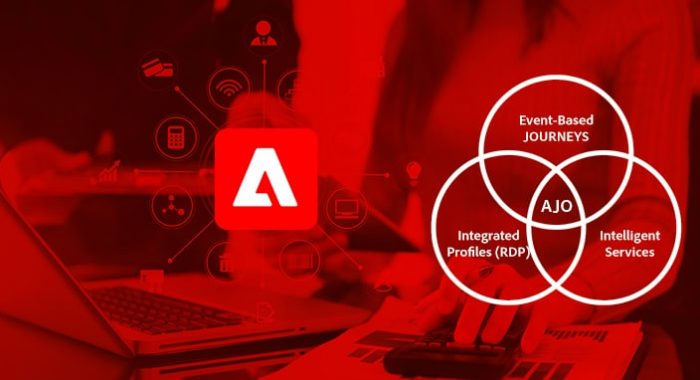
Key Benefits
- Add more fire power to your personalization efforts with integrated, real-time data from all your channels.
- Orchestrate and optimize journeys in a single place for improved customer engagement.
- Exploit Adobe’s intelligent services throughout the entire customer journey.
What Might It Change?
The announcement of Adobe Journey Optimizer came as a surprise, but is it a delightful one?
This is hard to say since AJO isn’t yet released, but we do know it will impact many of our roles and duties for the better. Instead of spending as much time integrating discordant systems until they run harmoniously, team members can spend more time innovating, creating other solutions for enterprise clients. Less time will be spent switching tabs back and forth and waiting for multiple programs to load, and marketers can spend more time focusing on customer interactions.
Nothing about the new application is set in concrete, but we at NextRow Digital certainly look forward to seeing AJO in action and being an Adobe partner providing implementation and support services. Contact us at +1-847-592-2920 or marketing@nextrow.com to learn about our Adobe-certified integration services.
How to Maximize your Marketo ROI
Create a Strategy
Advanced marketing automation is made possible through clear and powerful strategies. If you want to increase the efficiency of campaigns, you must define a strategy that includes all steps toward your set goals. You need to figure out:
- What are your goals? Or what do you want to achieve from these campaigns?
- What are the resources you require to complete the job?
Take your achievements to the next level after gaining the ability to create effective strategies and organize resources for important initiatives.
Understanding business goals and data analysis are the two important tactics that need to be considered during strategy design.
Define the goals
Defining goals and analyzing the data of your organization is important. Let’s assume your manager requires SQLs. Then it’s important to understand what SQL means to him. With this in mind, you should then define SQL in terms of your organization. This definition should inform and guide you in creating and measuring adequate program scoring. In this process, you need to break down your goals and define two important terms:
- Business with respect to metrics
- Marketo data
Manage your data
Create customer groups with the segmentation tool. Segmentation helps in sending target messages to targeted customers for a personalized experience. It is important to have relevant data rather than a huge amount of data. When segmenting customer data, consider these:
- How valid is your data?
- Do all fields have correct values?
- Resolving Data duplication issues
- Regularly cleaning data and deleting junk files
Clean out your data and delete junk files regularly to keep your database neat and save time in the future.
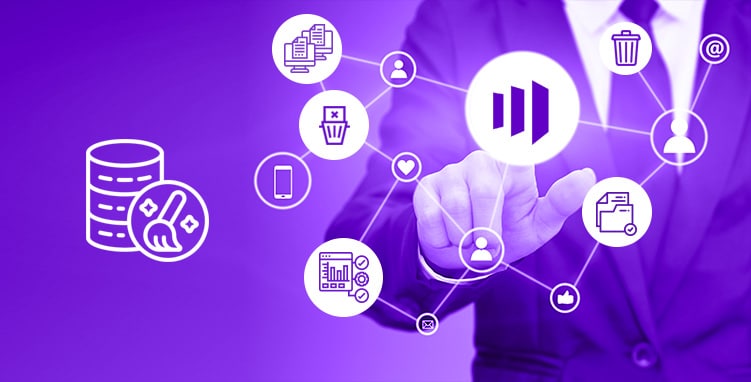
Develop Process Flow
With clean data and strategy in place, the next step is to create the development process flow. Keep your campaign’s time zone in mind and start with a personalized message based on specific locations and time zones.
The number and complexity of your campaigns are not nearly as important as the message, delivery, and audience of each. Campaign success is largely based on delivering personalized campaigns to the right people at the right time. Once a campaign is launched, analyze the campaign, its execution, and its advantages and disadvantages to improve future launches.
When you invest in Marketo, you’re also investing in identifying your audience and the individual growth of your marketing team. You don’t need a team of experienced personnel when using Marketo; you can continue with the people who are experts in specific areas and help them expand their skillsets. However, there should always be at least one person in charge of managing campaigns to keep them on track until completion.
Wrap up
How Do Marketo Smart Campaigns Help Marketers?
Sending the right message is not magic, but the results can be. Knowing what the “right” message is can be tricky though; it requires an understanding of a customer’s needs and of timing. Have you ever wondered what will happen if you miss the alert that a potential lead has been triggered, and no one is assigned to deal? You will not be able to act in time, and those valuable leads will become lost opportunities. Smarter marketers avoid this by using Marketo Smart Campaigns, a marketing automation tool that ensures timely actions and simplifies the more complex, time-consuming aspects of your job, such as sending emails, updating field values, scoring leads, etc.
Marketing automation is most efficient when using a tool that can smoothly integrate with your engagement platform and send results in real-time. Stop waiting on those important survey results, and use a trusted automation tool like Marketo Smart Campaign to make your work processes as efficient as possible.
For example, Marketo Smart Campaign connects you with visitors by sending a confirmation email to any user that could be potential lead. Simultaneously, it sends an alert message to you about the lead. This allows you to act fast while remaining informed, making Marketo’s automation critical to your success when used correctly.
Here, we are going to share insights about the smart campaign and how you can use them to achieve your marketing goals. Let’s start by looking at what a Smart Campaign is, what Smart Campaigns do, and how to create one.
Marketo Smart Campaigns
A smart campaign is an automated marketing logic that tells your program what to do when someone interacts with the assets. A smart campaign acts after you define who, what, and when factors for your program. It works in three steps:
- First, you must identify the “who”, recognizing your target audience for the program either manually or by using triggers or batches to build the smart list.
- Then determine what action will be taken when a person interacts with your program.
- And lastly, decide when the smart campaign will take action. It can be activated based on user activity or can be scheduled to go on a specific date or time.
Smart Campaigns make you smarter
Marketo programs are managed by smart campaigns. They send emails for event programs, they add, suspend, and remove people from engagement programs, and measure the success of each program, based on how you define it.
Smart campaigns also control Marketos’s operations. All operational programs, including lead lifecycle, Salesforce/CRM synchronizations, reporting, scoring, Sales Insight, and data management, are handled by smart campaigns.
How do you create a smart campaign?
Smart Campaigns has 3 areas.
- Smart List
- Flow
- Schedule
Smart List
Smart list is a list that includes those you wanted to Target with your Smart Campaigns. It includes Filters and Triggers.
- Filters –
Collect information for the present as well as past time period. It is a powerful tool, depending upon how you are using it. You can use it in different ways, alongside Triggers.
- Triggers –
Activate when certain conditions are met, based on predicted future behaviors, triggering/firing as soon as requirements are met. The most common smart list triggers are links, clicks in the email, form filling, and visiting the web page.
The most popular smart list filters are Link Clicked in Email, Form Completed, Web Page Visited, List Member, and Smart List Member.
Smart lists are also used for many Marketo reports.
Flow
Once the target list is selected, add the flow step. Flows are rules of automation.
- The most common activities you perform on your list are Send Email, wait (before performing any other action), Add to List, Send Alert, Edit Score, Edit Data Value, Synchronize the person with Microsoft Dynamics/SFDC.
- Changing the value of the data is especially important. You can change the value of any person or company field. You can also add a condition using the ‘Add Choice’ function. For example, you can modify the value of a person field, if the field is empty.
Schedule
Finally, you need to plan or activate your campaign. Smart Campaigns are of two types – Trigger and Batch.
Batch Campaigns – considers leads in batch and processes all of them using the Flow. It will run at once or you can schedule it for a specific time.
Trigger Campaigns – considers only one lead at a time to process.
Creation of New Smart Campaign
Step1:
Navigate to Marketing Activities.
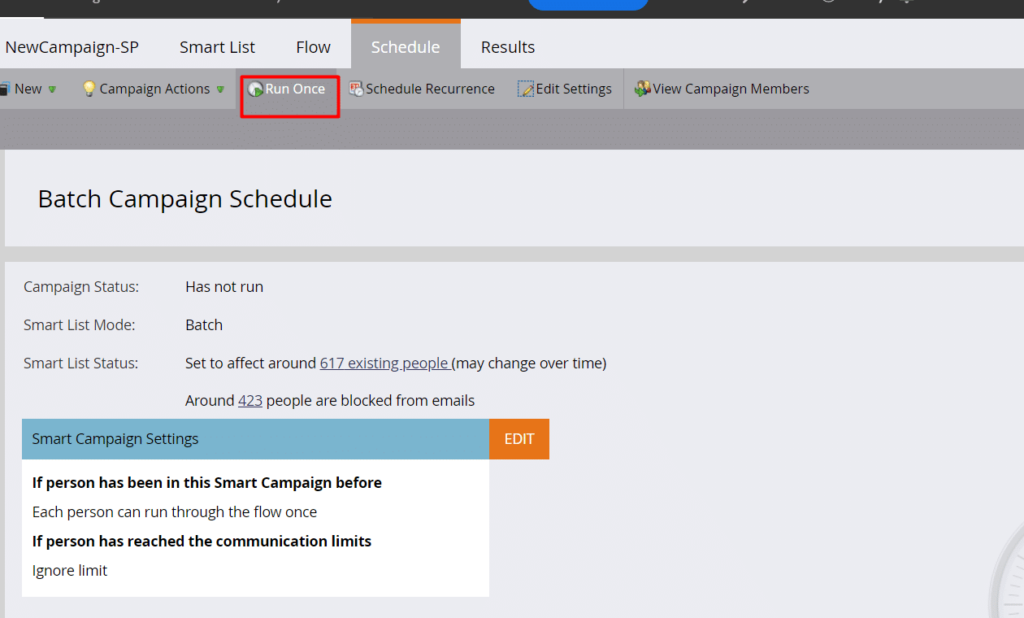
There are 2 ways of creating smart campaigns for the Programs: –
- Right click on the selected Program and click on the New Smart campaign.
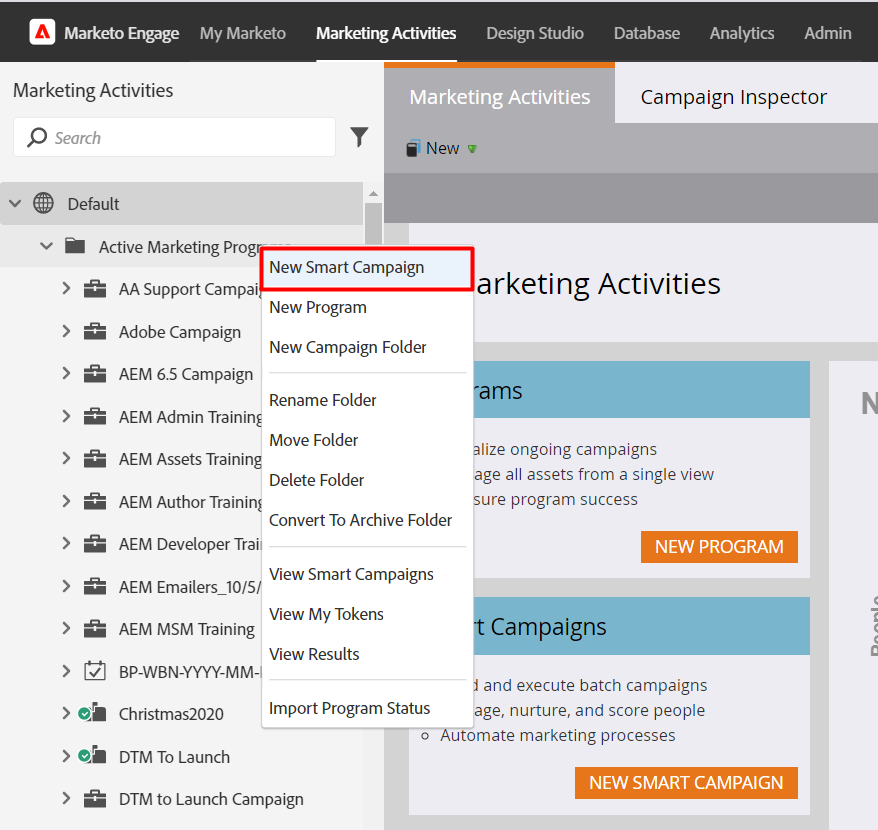
- Right click on the selected Program and click on New Local Asset. Then select the Smart Campaign from the pop-up window of New Local Asset.
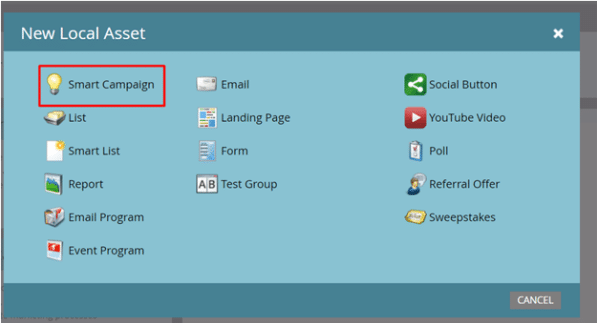
- Enter the Smart Campaign Name and click Create.
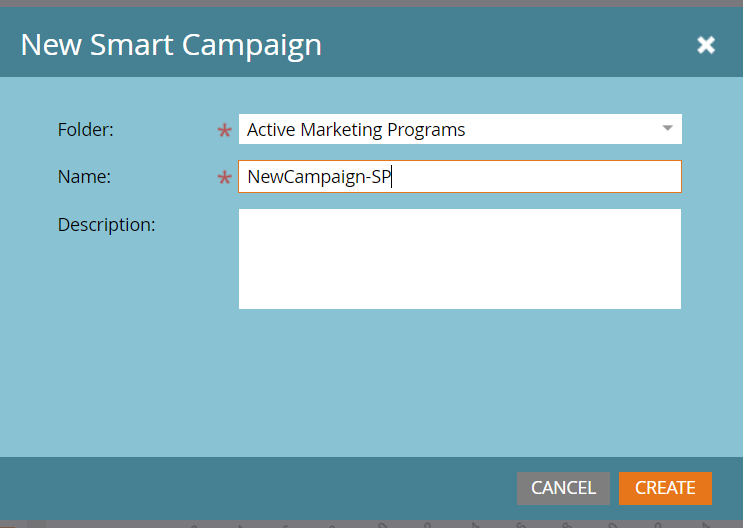
How to create Trigger in Smart Campaign
Step 1: Choose the smart campaign and select the smart list tab.
Step 2: Search for the required trigger and drop it onto the smart list tab.
Step 3: Choose the operator from the dropdown.
Step 4: Define the trigger.
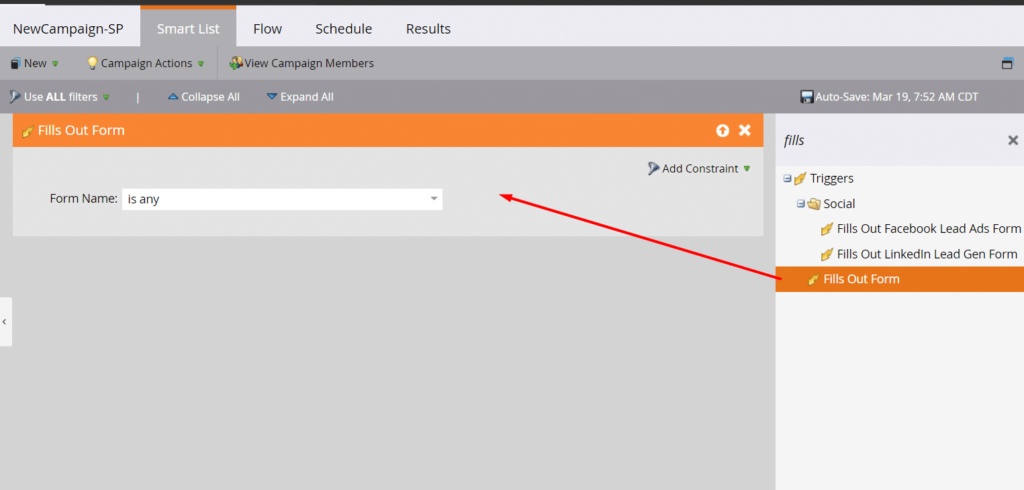
Step 5: Send an email to the respective person who filled out the form and also send an alert to the sales team.
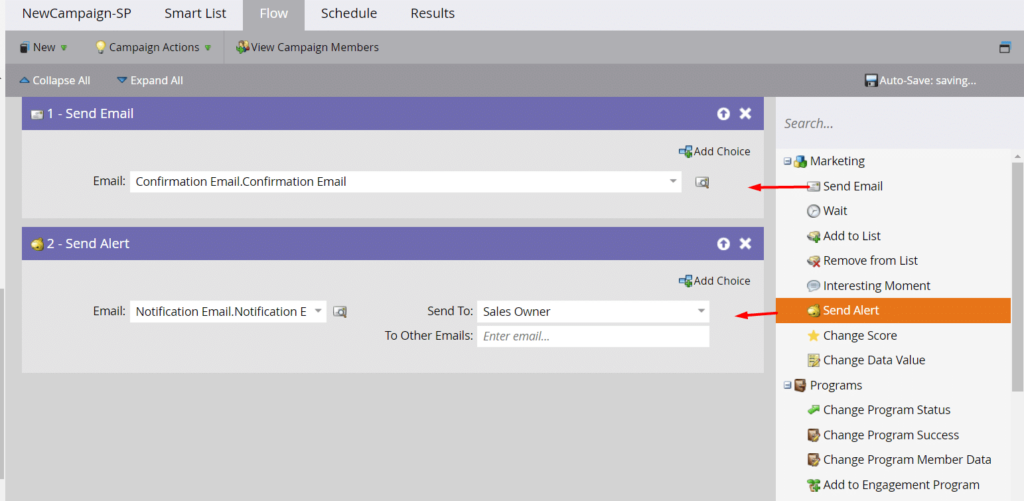
Step 6: Activate the campaign from the Schedule tab.
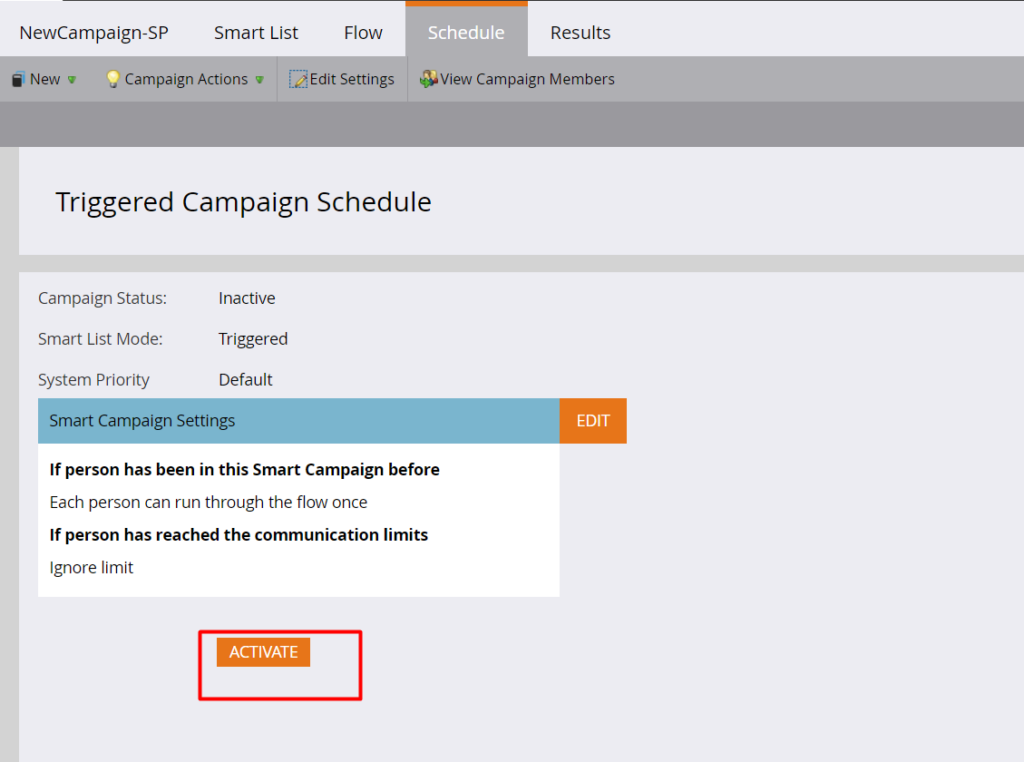
How to Create Batch Smart Campaign
Step 1: Choose the Smart Campaign and select the smart list tab.
Step 2: Search for the required trigger and drop it onto the smart list tab.
Step 3: Choose the operator from the dropdown.
Step 4: Define the trigger.
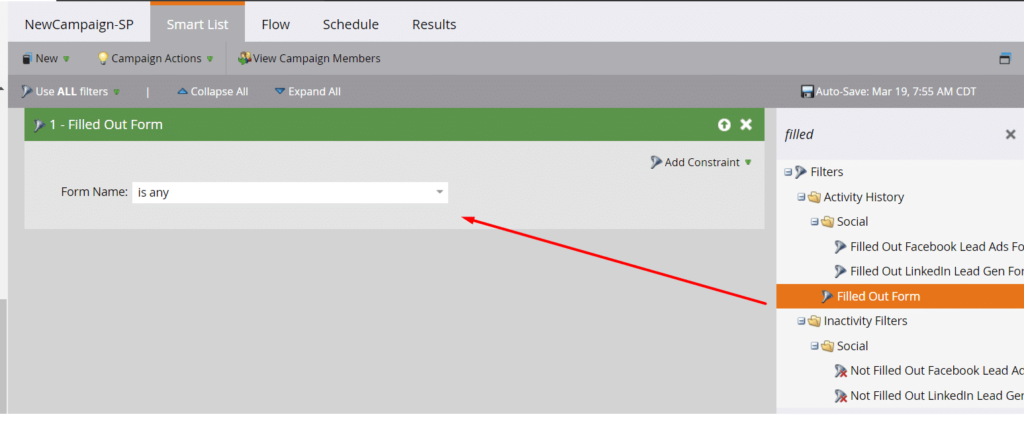
Step 5: The Batch campaign is created for past actions, so the schedule option will not be available. If you run it once, the option will be available.
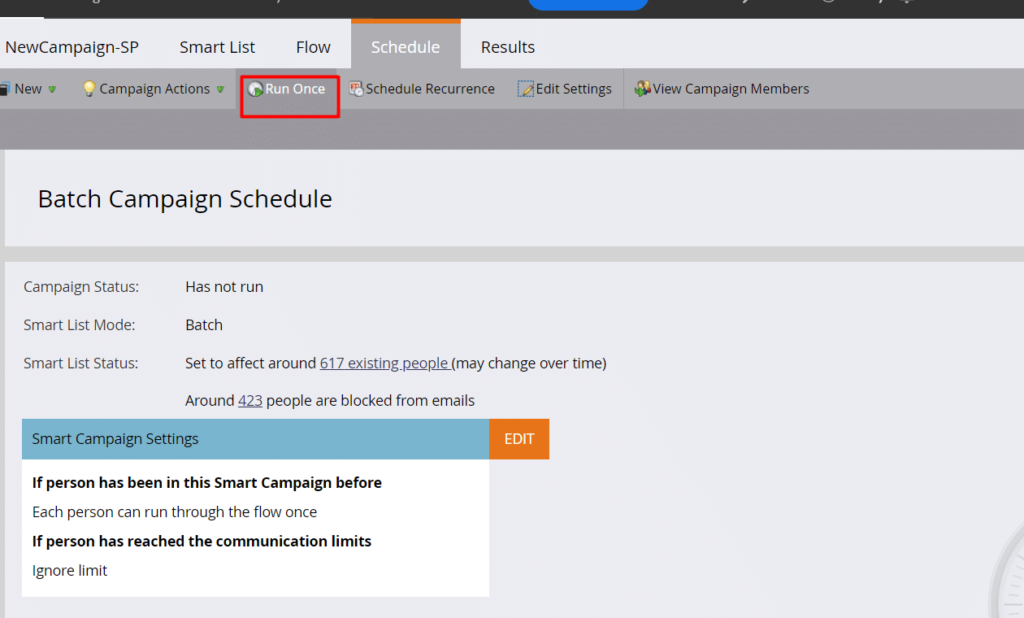
Wrapping Up
Marketo Engage Latest Update- Changes To Design Studio URLs
Adobe released details about the upcoming changes in Marketo Engage. Marketo Engage will gradually begin provisioning new subscriptions with the new URL structure from Jan. 21, 2021. By March 5, 2021, all new Adobe Marketo subscriptions will be provisioned with the new URLs. For all existing users, the changes will be effective from April 1, 2021.
Let’s learn more about the update- what it is all about, what the benefits are, what you should do, and how it will affect you if you ignore the changes.
What will change?
Marketo Engage will make changes in the URL structure of the landing pages, Images, Forms, and other file assets. The URL will include CNAME, so each Marketo Engage subscription/instance will have a unique hostname.
Who will be affected the most?
Subscriptions that are already using CNAME for their Landing Pages, Forms, or File assets will be least affected. However, one who is using a generic URL without a custom CNAME has to make changes in the existing URL structure of Landing pages, Forms, and File assets.
Why is this change required?
In the earlier case, Design Studio uses a common hostname to be shared by all customers if there is no custom CNAME configured with the Marketo subscriptions. In such a case, a phishing attack is common since the destination of the URL being accessed is not clear to users.
Now, the destination of URLs will be clear to users by having a unique Hostname for each instance. Also, CNAMEs used in the new URL structure represent company name and thus help in branding and gaining trust from the customers.
Before Vs After the Update
Adobe Marketo users can add the CNAME at the time of initial implementation for a friendlier URL for Assets in the design studio. Check out the changes that will be applied to the URLS of the assets with and without CNAME:
What users need to do?
- If you have not added CNAMEs to your Landing Pages yet, assign a CNAME ASAP by following the instructions here – https://docs.marketo.com/display/public/DOCS/Customize+Your+Landing+Page+URLs+with+a+CNAME.
- List all your landing page URLs, images, and Design Studio file elements. Update their URL structure using CNAMEs required by the Marketo engage URL updates.
- Make sure to update all the URLs where it has been used earlier on an external website, landing pages, CTAs, etc. This will lead you to audit all your assets making it the perfect time to clear all unwanted / unused / test landing pages, images, etc.
- Last, but not least – If you have not yet set up the SSL, Do it now. You can follow the instructions here: https://docs.marketo.com/display/public/DOCS/Add+SSL+to+Your+Landing+Pages
Magento 2.4.2- A Contemporary Approach for ECommerce Business
Magento is always releasing upgrades and improvements to enhance user experience. This time, Magento 2.4.2 introduces advanced performance, better security, and many other features and functionalities. With more than 280 bug fixes and 30 security improvements, it takes UX to a completely new level. Let’s see what is new in this version of Magento and how you can use it to your advantage.
Major highlights of features and functionalities of Magento 2.4.2 are:
- Split Database and VBE (Vendor Bundled extension) are marked as deprecating in Magento 2.4.2, which will no longer be supported in the further updated version of Magento.
- Magento 2.4.2 comes with the Alpha version of the upgrade compatibility tool that tells you about the issues in code while upgrading to a new version of Magento.
- New level of security and performance.
- Headless commerce support.
- This version of Magento supports Varnish 6.4, Redix 6, and is compatible with composer 2.x.
- New experience for B2B merchants and end customers.
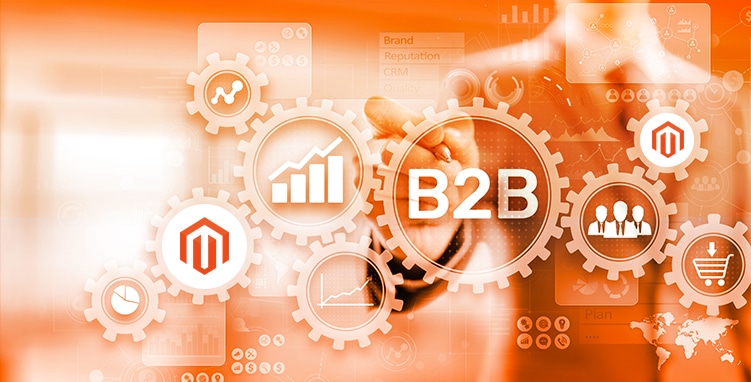
New Security updates
With the growth in online shopping and sales, online fraud is also growing at a faster rate. As per a report, it has been revealed that companies will generate 20% more revenue if they are digitally trustworthy in comparison to companies that have lost or are slow to building trust. Keeping these facts in mind, Magento makes Magento 2 more secured and trustworthy by reducing the security backlog issues by almost 93%.
In the case of a vulnerability, any attacker first retrieves data from Admin. Magento provides several steps to process administrative data such as 2-factor authentication, IP allow listing, use of VPN, and more.
The major security updates are:
- All core cookies will support the Same Site attribute to fulfill the cookie regulations.
- Better approach for close remote code execution (RCE) and Cross-site Scripting (XSS) vulnerabilities.
- File system operations have been improved to avoid malicious uploads.
- No more core content security violations.
Advanced Infrastructure
With an advanced customer account, cart, checkout process, catalog, OMS, CMS, B2B platform, import/export, and preview, Magneto 2.4.2 improves the core quality of the framework and its functions.
Magento claims that the improvement in the media gallery makes its performance 30 times faster. It’s now easier to manage and work with images, transforming your current sales process into a more efficient version of itself. Plus, the media gallery is now integrated with Adobe Stock so that you can access stock images from the media gallery.
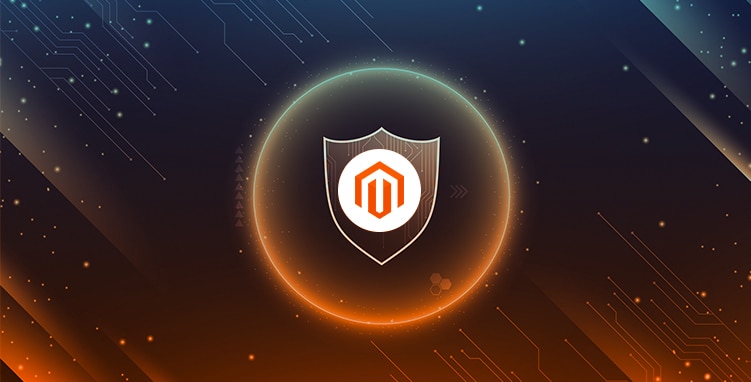
PWA Studio supports
PWA Studio enables Magento to support multi-language and multi-currency, so merchants can easily launch a high-performing international website. It also supports multiple stores. In addition, Magento adds the “My Accounts” section in Venia, along with optimized performance and better extensibility.
An Advanced Search engine makes the customer experience better
Almost every visitor of your website will perform a search action to find relevant products or services. So, this needs to be more accurate and user-friendly. Magento is now offering an excellent search experience with Elasticsearch. The Magento search engine powered by MySQL is dead in its recent version. Now, you need to install Elasticsearch on your server. This improvement will definitely take your customers’ experiences to a new level of happiness.
A new experience for B2B
Magento 2.4.2 brings a lot for B2B buyers and sellers. It introduces a new online payment system with purchase policies and enables a merchant to accept payment through any payment mode. Using GraphQL APIs, Magento delivers amazing headless B2B capabilities, such as:
- Seamless integration with other content management systems;
- An easy to update front-facing content layer, minus making any changes in the back-end logic;
- Faster website scaling;
- And help with your personalized marketing approach.
AWS S3 Support
Magento 2.4.2 comes with advanced support services for Amazon Simple Storage Services (AWS S3). Now you can store media files on AWS S3. The platform will also support object storage so that you can access those objects in the future.
Magento 2.4.2- A futuristic version of itself
Magento is well-known for bringing new features to users. As this is the age of futuristic technology and customer-centric business approach, Magento is driving its platform accordingly. With every upgrade, it offers more for the sellers, developers, marketers, and buyers. We can expect more from Magento in the future.
If you need any help regarding Magento or its recent update, contact us at +1-847-592-2920 or ecommerce@nextrow.com. We are always happy to help.
Want to Become An Expert In Marketing Technology?
Marketing is an indispensable part of business, or of profitable business. The old days of marketing were limited to banner ads, events, door to door, word of mouth, television advertisement, and radio advertisement. Modern day technologies and internet have completely transformed marketing. Nowadays, marketing is a vast term that encompasses both the “old days’” and todays’ techniques. Marketers must possess a strong understanding of their industry and customers, as well the capability to think out of the box and use the tools and technologies of the trade.
MarTech has become a buzzword, which is a term used to identify tools and technologies used for marketing. Here are examples of MarTech,, why marketers use and should continue using MarTech, and how it is used to make a marketing approach more efficient.
MarTech – A combination of Marketing and technologies
MarTech could be any technology or software that helps a marketer plan, execute, analyze, and optimize marketing campaigns to efficiently achieve previously set marketing goals. MarTech applications automate and streamline a marketer’s day-to-day activities.
MarTech simplifies –
- Planning and execution of marketing campaigns;
- Collection and analysis of the results of marketing campaigns;
- Measurement, tracking, and analysis of the market campaign’s performance;
- Implementation of the insights in future campaigns.
Key MarTech Categories
| S.No | Categories | Sub-categories | Examples |
|---|---|---|---|
| 1 | Content Marketing Tools | Content Management system, Search engine optimization, Landing Page and A/B testing, Content Curation Tools, Content marketing platforms, Digital Asset management, Lead magnets | WordPress, HubSpot, Drupal, Moz, Ubersuggest, Yoast SEO, Coveo, Unbounce, Wix, Instapage, Scoop.It, BuzzSumo, HubSpot, Marketo, Adobe Experience Manager, Bynder, OptinMonster, Sumo, Bloom, etc. |
| 2 | Rich Media Tools | Video making tools, Video Marketing platforms, Podcasting tools and apps, Graphic design tools, Interactive content | Biteable, DaVinci Resolve, Wistia, YouTube, Vimeo,IBM Cloud Video, iTunes, Google Podcasts, Canva, Pixlr, Adobe Creative Cloud, SnapApp, Prezi, etc. |
| 3 | Social Media Tools | Social Media management tools, Social Media Monitoring tools, Influencer Marketing platforms | Hootsuite, Google Alerts, Upfluence, Brand24, etc. |
| 4 | Marketing Automation Platforms & Tools | Marketing Automation software, Email Marketing Tools, Mobile Marketing platforms | Hubspot, CleverTap, Marketo, Salesforce, Marketing Cloud, MailChimp, etc. |
| 5 | Advertising Platforms and Tools | Search engine marketing, Social Media advertising, Native advertising, Programmatic advertising | Google Adwords, Bing, Qwaya, SmartyAds, Taboola, etc. |
| 5 | Sales Enablement Tools | Sales Automation Platform, Customer Support tools, Customer relationship management | Zoho, Zendesk, HubSpot, Salesforce, Outreach, etc. |
| 6 | Data and Analytics Platforms | Data management platforms, Customer Data platforms, Web analytics, Tag management, Predictive analytics | Adobe Audience Manager, Google Analytics, Kissmetrics, Evergage, Google Tag Manager, Aviso, etc. |
How to use and deploy Martech in business process
There are more than 5,000 MarTech products catering to different industries, meeting marketers’ challenges, and reaching different areas of marketing. Selection of relevant MarTech depends upon need and complexity of the technology. For instance, WordPress is a MarTech solution that meets the needs of a blog or CMS website.
Businesses need to have a clear, centralized vision and marketing plan/goals before adopting a MarTech product. Otherwise, the business might accidentally adopt multiple technologies with similar or overlapping features. For instance, one department is using Mailchimp for email marketing and another one is using Marketo, adding to avoidable business expenses.
Finding the quintessential MarTech solution for each organization completely depends on each one’s business model, size, resources, business goals, and requirements. Also, keep in mind that your marketing goals will change as you meet and surpass each one, so you need a tool that will allow for this growth.

Arrange your MarTech Tools to bring efficiency
The collection of all marketing tools and technologies is called MarTech Stack. To reach your marketing goals, it is vital that all of your MarTech tools integrate or meet at different stages of the marketing funnel. An organized MarTech Stack leads to:-
- Marketers conveniently integrate and share relevant marketing data to create meaningful reports easily.
- Marketers easily select the most relevant apps or tools for their requirements, boosting efficiency.
- Less downtime since some of these tools can assist in interdepartmental sharing. All of the above equal better efficiency, which we all know is equal to more revenue.
How to make a perfect MarTech stack
- Marketers may get confused as to which Martech tools should be used as they have loads of choices available to them. To build a MarTech Stack that can bring the desired result, you should take a look at your marketing process and funnel. Here are few key points and questions that can help create an effective MarTech Stack:
Understand your business model: What is the product or service? Are you a B2B or B2C business, Business sector? Is there a natural sales cycle, Pricing model? - Understand each and every stage of your marketing funnel. How do you process these steps in marketing funnel –awareness, interest, purchase, consideration, post purchase evaluation, and repurchase?
- What is your marketing approach? How do you collect customer data? How do you create customer personas? How do you communicate with your customers? What are your strategies for content distribution across multiple platforms? How do you identify and nurture the leads? How you track your campaign’s performance, and how you get and use insights from reports?
A lot goes into making MarTech decisions, but remember that this investment will propel your business toward your preset marketing goals and desired revenue.
Conceptualization of MarTech Stack
Now, start making a list of MarTech tools that you require to create a market funnel that suits your business model and goals.
You need to understand that every business has its own unique requirements and thus they need a unique MarTech Stack, however there are a few tools and technologies that you can expect to add or consider adding to your MarTech Stack:
- Content Management system
- Email marketing tool
- Social media platforms
- Automation software
- Analytic tools
- Conversion tools
- CRM tools
- Customer service

Take one step more to become a leader
You know now what MarTech and a MarTech Stack are, why you should adopt these two into your marketing approach, and how you could implement these. No matter what solutions you go with, there are a set of traits that you must own or be willing to develop to become a tech marketing expert in MarTech:-
- Ability to think critically and creatively. You must be creative in approaching people, showcasing your products, and so on.
- Be ready to take calculated risk. As every approach is based on set goals, you should have the ability to take risks to determine the most effective marketing strategy.
- MarTech always bring new changes and updates, so you must be willing to learn.
- Longevity to gain experience. You should have in-depth knowledge of at least one marketing area and know how to make a great marketing strategy.
The Parting words
Becoming a tech marketing expert in Marketing Technologies is not easy; it requires a lot of research, creativity, out-of-box thinking, marketing expertise, as well as a little bit of technical knowledge. Look, you’ve just added to your knowledge by reading about the umbrella term MarTech and the unlimited opportunities it unlocks for marketers.
If you still have questions or want to know more about MarTech feel free to contact us at +1-847-592-2920 or marketing@nextrow.com.
How To Plan And Migrate To Marketo
Migrating your current marketing automation to Marketo is an easy decision to make, but there is a huge volume of data, growing daily, that makes the transition tricky. Moreover, marketers need to keep up with the many channels’ customers use to remain relevant. Marketo steps in as one of the best B2B marketing automation software options around, simplifying this work, helping you manage your marketing process with ease, and giving you more opportunity to engage with you clients.
This platform is trusted by millions, in businesses across the globe. Choosing the right marketing automation software for your company might seem daunting, until you learn more about Marketo.
Why you should consider migrating to Marketo
Marketo incorporates the latest techniques and technology to provide programs capable of solving modern marketing problems and simplifying a marketer’s work. Here are a few reasons why Marketo is recognized as a leader in the market by renowned technology research firms like Gartner and Forrester:
- Supports multiple channels and has configured templates, so campaign replication becomes faster and easier
- Easy Salesforce cloud integration (and MS-Dynamics)
- Better analytics and reporting tools
- Simplified campaign creation
- Offers a rich ecosystem for marketing technologies and partners
- With partitions and workspaces, you can keep everything separated
All in all, Marketo redefines marketing efforts by nurturing marketing campaigns; it aligns your marketing campaigns to achieve your marketing goals in a simpler and faster manner.
Let’s look at the process of migrating to Marketo.
Initiation of Marketo Migration
It is true, Marketo migration from your existing marketing software is complex and requires heavy lifting. You’ll need to consider:
- What to do with your existing marketing data;
- Safety measures that you need to follow during migration to avoid any losses;
- How you can migrate the data to Marketo, and more.
This article explains everything, including preparing yourself for migration. Let’s start with the preparation steps for migration.
Planning and Preparation
Preparation, planning, and strategy are key to a successful Marketo migration. You need to understand the current scenario, your requirement for migration, your marketing goals, etc. Here are a few tasks to complete before starting the migration process:
- Mark it as an important project
Consider it a major project and assign a manager to oversee the process. It will require involvement of the sales, marketing, and IT teams to make the migration process faster and easier. So, identify the right person from each team to spearhead his/her department’s side of the project.
- Define your goals
What you are expecting from migration? What do you hope to accomplish in the future with Marketo? Consider the differences between automation terminology and Marketo’s terminology, and document everything. This will help you redefine your marketing capabilities and approaches, and thus produce effective results.
- Plan your activities
Create a timelinefor all the activities required in Marketo migration, andplan for sunsetting your current marketing automation tool. Based on your current marketing automation tool’s sunsetting time, schedule a date for migration. Define your day-to-day activities, assign and delegate accesses to the marketing team, and define your budget.
- Prepare your Legacy Systems
Now, it is a good time to clean up your assets, such as database, files, and campaigns. Consider which of these should be migrated and those that should not be. Prioritizing them for migration and focusing on ridding your database of junk will make your migration faster.
Next, you will need to upload all your assets and share them in a team folder, creating a central repository of assets that can easily be migrated to Marketo.
Now you’re ready to migrate
You have developed a strategy, perspective, and goals. It’s time to start phasing out your current marketing automation software for Marketo.
- Replicate and integrate your assets
In this phase, you need to organize your inventory. It is necessary to work on what files should migrate, how they should migrate, and how to prioritize the migration. Export files in a suitable format and map them in Marketo.
Here are the most important contents that must be addressed accordingly:
Database
- Clean up the prospect database, so you can start your Marketo journey with more valuable data.
- Export the current database in Excel or CSV.
- It is especially important to export the unsubscribe list so that anyone who has unsubscribed from your marketing emails in the past will not be included in the list again.
- Remove custom fields, or columns, that you have marked to not include in import into Marketo from your prospect’s spreadsheet. Make a list of used and unused fields in a separate Excel sheet to replicate those fields in Marketo faster. Later, once you sync with CRM, you will map the respective fields to the corresponding fields.
- Import your list of unsubscribed users into the Marketo instance and choose global unsubscribe. This will ensure that the respective prospects are immediately unsubscribed from Marketo and are not present in the email database. This should be done as soon as possible to avoid any impact on Marketo’s IPs.
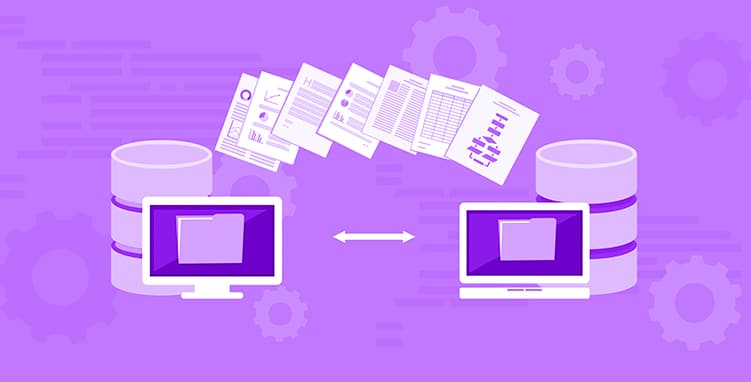
- Inventory all email templates in the previous marketing automation tool. Decide which ones should be migrated to Marketo, and then inventory all your sent email contents.
- For a personalized email template, you can create custom email templates in Marketo using HTML / CSS and a text editor.
- Copy Email content from the shared folder and paste it into new Marketo templates.
Landing Pages
- Decide which landing pages you want to recreate in Marketo. Define their purpose based on the traffic to the pages. This will help you to prioritize them for migration.
- Use Marketo Landing Page Builder and the default template to create the personalized landing pages that will include your business branding. The template will be responsive and works with mobile devices as well.
- Developers can create a personalized landing page template by using custom templates in Marketo with HTML / CSS and a text editor.
Forms
- Forms play a major role when migrating to Marketo. Write down any form you want to migrate to Marketo. List the notes on all the fields used in each form and the automatic responses will appear after the form is submitted.
- Recreate the forms using Marketo’s Form Builder. Add all the fields needed to create the form that will generate the same information about potential prospects as your old forms.
- Add necessary completion actions, autoresponder emails, and thank you messages. Then, these forms will have a similar function to your old system.
Lists
- Make a note of any valuable list or smart list that you want to move to Marketo.
- Take detailed notes on the Default/Custom fields.
- The segmented lists will be processed based on the criteria a prospect must meet to fall into your smart lists.
- Target lists and segmentation of the audiences are crucial to create personalized emails and other content.
- Process and workflows will be your new smartlist.
Files
- List all files from the old marketing automation tool. Make a backup of all white papers, images, or gated contents that you want to import to Marketo.
- Upload all the fields you saved in the Shared Drive to Marketo Design Studio.
Scoring Criteria
- Take a backup of all scoring criteria from the previous marketing automation tool, along with the total points allocated for each section.
- Include the sales team to align sales and marketing with the lead scoring criteria. This will ensure that all lead scores are normalized in Marketing and Sales with Marketo.
- Add custom scores or change Marketo’s default rating system to match your rating criteria.
Automation
- Make detailed notes on any triggers in your automated tasks and logic in the engagement program, if you want the same process.
- Recreate Marketo’s automated programs into marketing activities using the same logic including actions, triggers, and rules.
CRM Integration
- Now that the fields are already created in Marketo, you just need to map them to the corresponding Salesforce field. Choose the sync behavior for each custom field created to determine whether Salesforce, Marketo, or the most recently updated record takes precedence.
Add a section somewhere for workflows, and segmentation, personalization.And also write about training the team on Marketo
Test and train
This step will help you and your team understand the new marketing approach and tools available with Marketo. Everything comes together in this step, so remember to:
- Test landing pages with respect to forms and auto-response functions.
- Check out how the data is appearing in CRM.
- Check out new reports for format and accuracy.
- Keep every department in the loop.
Once you have completed the few steps above, get ready for the first campaign launch by making sure your team receives Marketo training. As with any other tool, it doesn’t matter how valuable the tool is if you don’t know how to use it correctly. After putting so much time into migrating to Marketo, you should also plan for training everyone that will use Marketo.
Begin Your New Journey
Once you are done with all the processes, you are ready to begin your journey with Marketo. This is a complex and time-consuming project, depending upon the complexity involved in your old process, but the return on investment will be palpable. As you know, migrating from one MA platform to another can be trying, but with proper planning and Marketo experts around, you can minimize the risks and maximize the benefits of Marketo from day one.
If you want to train your team or aren’t sure whether you’re getting the most out of Marketo, NextRow Digital can help. We provide company specific training and show your team what Marketo can do. If you have experience in Marketo but would like to expand upon your skillset, we also offer training options to take you to the next level.
If you need any assistance in Marketo Migration, contact us at info@nextrow.com. Our Marketo experts will help you every step of the way, from pre-migration – no matter what your previous marketing automation system was – to training.
Adobe Summit 2021 – An Influential Event to Learn and Grow for Marketers and Technologists
After last year’s greatly successful Adobe Summit event
Adobe Target: Basics and Beyond
Adobe Target is a website optimization tool that enables data-driven marketers to optimize and deliver personalized, content-led experiences to their customers. Known for its A/B testing and multivariate testing, Target can help you decipher the prospects’ journey and build an engaging audience segment to convert MQLs into SQLs, thereby improving the overall conversion rate. It makes it easy for enterprises to modify the webpages for short-term campaigns and testing, allowing you to display certain content dynamically to a specific set of audiences.
Featuring integration capability with Adobe Analytics for reporting purposes and audience creation to deliver different content to different types of visitors, Adobe Experience Manager for delivering dynamic content, Adobe Audience Manager for an integrated audience, and other Adobe Experience Cloud Platform Products, Adobe Target helps enterprises to deliver targeted and personalized content on the web and mobile sites, email and acquisition channels, mobile apps, internet-connected screens, devices, or any other channel that has content and can be tagged.
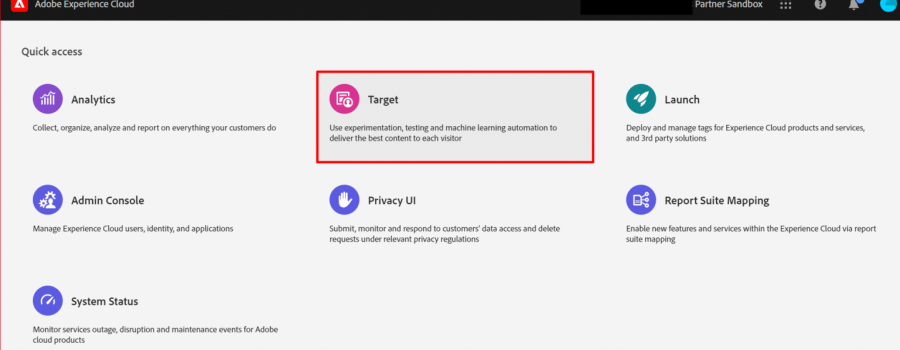
What can you do with Adobe Target?
Adobe Target contains activities, locations, experiences, offers, and audience. An activity allows you to test and target content to a specific audience that visit your website. That said, an activity has a start date (when?), a measurable goal (why?), and defines the experiences that each audience should see (what, where, to whom?).

Following are the different types of activities in Adobe Target which caters to specific goals:
- A/B Testing: Giving you a whole new experience, A/B Testing allows you to compare two or more variations of content at the same time to determine the best version for your audience.
- Multivariate Testing: Leverage the benefits of Multivariate Testing to test multiple elements of a website simultaneously to see which combination works best.
- Auto-Allocate: This activity automatically identifies the winner of multiple experiences and allocates traffic to the best experience.
- Auto Target: Deliver highly personalized experiences tailored to the audience based on their actions with Auto Target; it helps you create the best experiences for all the customers every time.
- Experience Targeting: Make the most of Experience Targeting to offer different experiences to the audiences defined by your criteria.
- Auto-Target: This tool uses advanced machine learning to create automated personalization from combining various high-performing experiences to find the best combination for your prospects.
- Recommendations: When you want to retain the interest of website visitors for a longer period of time, you’ll want to use this activity because it provides recommendations for the additional content for the audience to view. For example, if a video streaming site wants a person to stay on their site for an extended time, they would recommend videos to watch after titling them “Related Videos.”
Location is referring to a page or any other place where you run the optimization. These locations are the places where you can run different activities and experiences. In Location, you can display and swap content for the different visitors, and/or track visitors’ behavior. Location is powerful in Adobe Target Classic because a location can be any element on a page.
Experiences essentially determine what content should be displayed and where elements should appear. When targeting conditions meet, the most suited experience appears for the audience. Experiences contain messages, image assets, HTML links, offers, and more!
Offers are the content that is displayed on your webpages based on the campaigns. For example, when a visitor visits your site during a clearance sale, he/she gets a deal that says, “Buy 2 Get 1 Free.” This is an offer. Offers can contain links, image assets, buttons, and text. You can also personalize offers based on your audience preferences.
Audiences are the groups of people we are targeting. They are defined by criteria such as the geographical location, age, gender, previous searches, and more. Each audience is in the receiving end of highly personalized experiences.
With all of these activities and tests, you can enhance, personalize, and automate your targeting. To top it off, you can also apply targeting to any type of campaigns from emails to mobile apps and see the results immediately. With automated personalization at the tip of your hands, marketing becomes easier; conversion becomes faster, and you become smarter.
Adobe Target is truly a remarkable display of technological advancements. If you want to target your website visitors with more confidence, then use Adobe Test and Target. Once you get used to it, you’ll never want to go back to simple marketing. This is the key to drive in customers and open doors for new opportunities.
Vanity URLs in AEM – Part 2
Configuring dispatcher to get the list of Vanity URLs:
In the given example below, for the demonstration purpose, we had set up an AEM instance and dispatcher in a local machine (PC). Same procedure can be applied in real-time applications as well.
Before making changes to the dispatcher configuration file, follow the below steps:
- Download Vanity URLs Component and install it on publish instance.
- In order to verify that the installation is done correctly, go to /libs/granite and look for dispatcher folder. If you have the dispatcher folder created, then you have successfully installed the package.

Now, give ‘Read’ permissions to Everyone group to /libs/granite/dispatcher/content/vanityUrls.
Now, let’s make changes to the dispatcher configuration file to get the list of Vanity URLs.
- Open dispatcher.any file and add /000X { /type “allow” /url “/libs/granite/dispatcher/content/vanityUrls.html” } to the /filter section (X can be replaced with any number).

- Now, add a caching rule to prevent caching of this URL. In order to do this, add /000X { /type “deny” /glob “/libs/granite/dispatcher/content/vanityUrls.html” } to the /rules section (X can be replaced with any number).

Now, it’s time to add the vanity_urls configuration. In order to do this, add the following to /farms section.
/vanity_urls
{/url “/libs/granite/dispatcher/content/vanityUrls.html”
/file “C:/Program Files (x86)/Apache Software Foundation/Apache2.2/conf/vanity_urls”
/delay 300}
url: it is the path of the Vanity URL service that runs on the publish instance.
file : It’s path of the file that stores the list of Vanity URLs.
delay: it’s the time interval in seconds to call the Vanity URL service to get the list of updated Vanity URLs. In the above example, it calls the service for every 5 minutes.

- Save the file and restart the server.
- Navigate to the file path mentioned above C:/Program Files (x86)/Apache Software Foundation/Apache2.2/conf/vanity_urls and you would see the vanity_urls file is created with the list of vanity URLs.
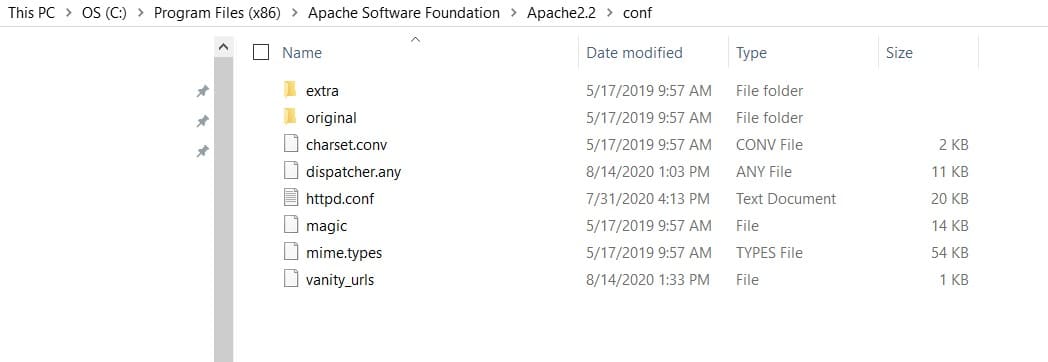
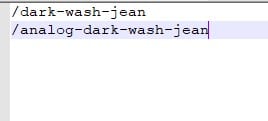
Now, you would be able to access the page using vanity URL using dispatcher which in fact would take you to the original URL.
Example: localhost:8080/analog-dark-wash-jean
Note: If you are not able to access the page using Vanity, make sure you have not added .html while creating a vanity URL. If you have added .html to the end of vanity URL, then remove it.
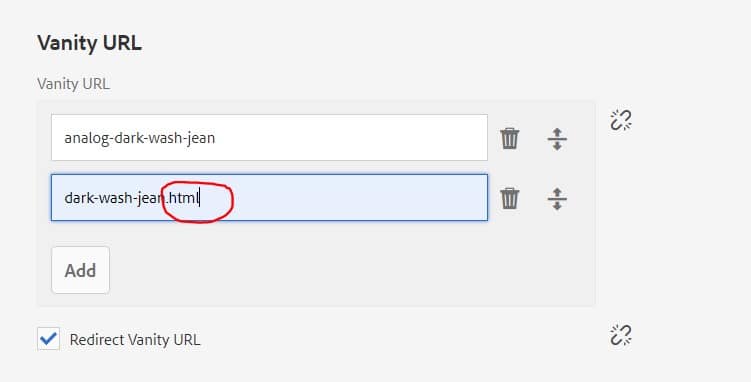
Above dispatcher configuration is a one-time set up and restart of the server is not required every time we add a new vanity URL on AEM pages. It automatically updates the vanity URLs list with the given time interval.
What is Salesforce-Adobe Campaign Connector?
Adobe Campaign is a marketing automation tool that helps your business to simplify and manage all the marketing campaigns. Using Automation rules in Adobe campaign, you can implement various email marketing strategies for your leads to increase the conversion rate of your campaigns.
Salesforce CRM is a marketing technology that helps you build more meaningful and lasting relationships with your customers. The goal of this solution is to improve business relationships with potential leads and close deals faster.
A good CRM software gathers information from end points across your business to provide you insight into how your customers feel about your product or services and what they are saying about your organization — this helps you improve your offerings, catch issues early, and identify any gaps in business process or technology.
What is Salesforce CRM Connector for Adobe Campaign?
Adobe Campaign provides a Salesforce.com CRM connector for linking your Adobe Campaign platform to your Salesforce.com CRM environment. This CRM connector enables you to synchronize contacts, accounts, purchases, etc. for better integration with Salesforce CRM. Adobe Campaign provides a dedicated wizard for collecting and selecting data from the tables available in the CRM. This provides bidirectional synchronization to make sure that the data is up to date at all times.
What can you do with Adobe Campaign and Salesforce CRM?
- Create new Salesforce leads with Adobe Campaign
- Create new Salesforce contacts with Adobe Campaign
- Create new Salesforce cases with Adobe Campaign
- Create new Salesforce opportunities with Adobe Campaign
- Create new Salesforce accounts with Adobe Campaign
- Secure Integration with Salesforce and Adobe Campaign Standard with encrypted Customer data
- Full Sync or Partial and Bi-Directional sync of data between Adobe Campaign and Salesforce
- Custom Mapping of Salesforce to Adobe Campaign Standard Fields
Conclusion
Adobe Campaign and Salesforce CRM address key challenges for businesses looking to build relationships with their customer base and drive profit. Adobe Campaign provides a Salesforce.com CRM connector that allows you to connect, automate, and sync leads and contacts with Salesforce CRM.
Reference Links:
Make List View as Default View in AEM Assets
AEM Assets allows customers to manage their digital assets for e.g., images, videos, documents, and audio clips in a web-based repository. It includes Metadata-support, Renditions, Digital Asset Management Finder and AEM Assets Administration UI.
Most of the AEM Authors like to view their assets in List view compared to Column view and Card view. By default, AEM shows the assets in Card view. Through my experience in AEM, I had found an easy solution to make list view as a default view for assets.
Solution:
- Overlay the /libs/dam/gui/content/assets/jcr:content/views/list and under /apps/dam/gui/content/assets/jcr:content/views/list
- Add a property sling:orderBefore to the list node , something like below
name: sling:orderBefore String card
- The XML looks something like this

- Click on Save All.
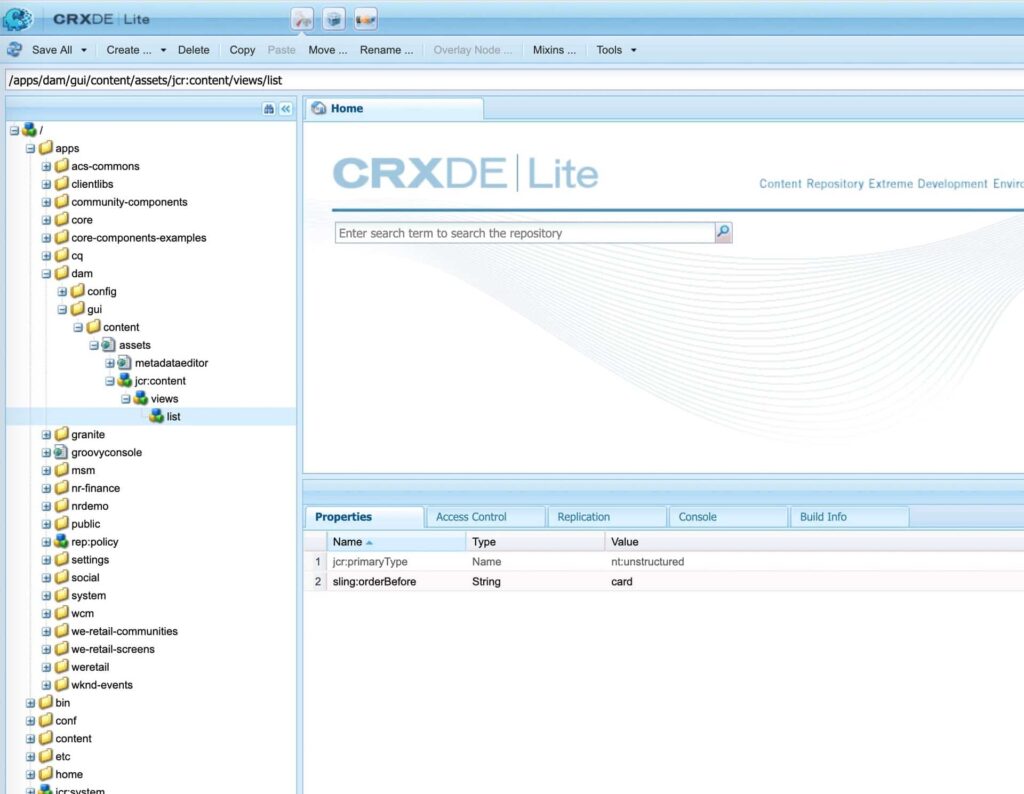

Although there are multiple ways you can customize views in assets, this is one the simplest way to achieve this. If you want more tips and tricks on AEM, please check our blog page.

